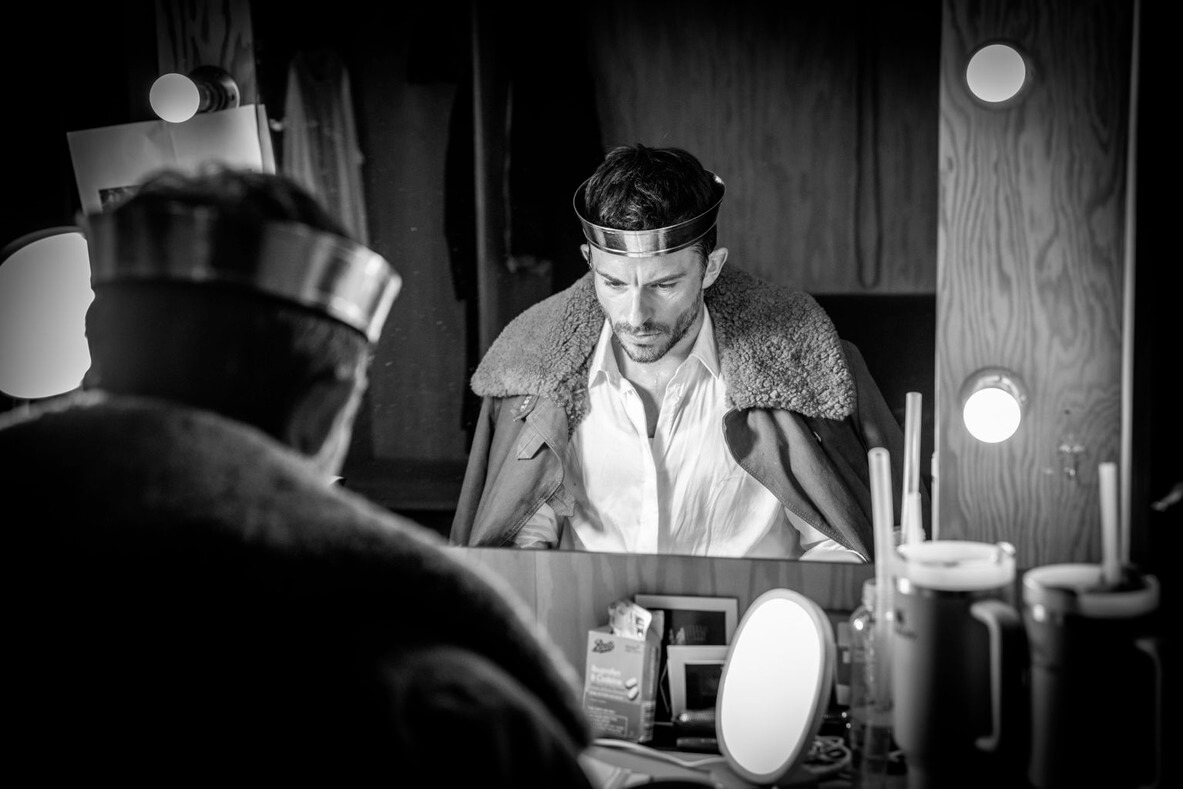We follow the famous group of riverbank friends - nervous Mole, (a vaguely west country accented Craig Mather) Ratty, a laconic and wryly amusing Simon Lipkin, the irrepressible Mr. Toad played with great infectious cheek by Rufus Hound and a richly voiced Gary Wilmot giving Badger resonating gravitas.
The clever addition of Mrs. Otter (Denise Welch) and her hungry daughter Portia (Emilie Du Leslay) not only helps redress the gender balance on stage but also creates a new story thread which runs through the show. I’ve always found the second half of any production of The Wind in the Willows a bit problematic. Whether it’s the mixing of the animal world with the human when Toad meets the washerwoman in prison or whether most of the charm is front-loaded at the beginning of the story, either way the introduction of Mrs Otter and her daughter helps enormously. The Wild Wooders (“You’ll find that do gooders come to no good”) kidnap Portia to fatten her up for a feast after they’ve taken over Toad Hall thus adding an extra layer of motivation for our friends to re-capture Mr. Toad’s stately pile as well as having the effect of making Toad seem a little less selfish and the weasels and stoats that little bit more wicked. Every show needs a good baddie and Chief Weasel is the loose-limbed Neil McDermott who, dressed like a spiv in doubled-breasted suit and trilby, gives Toad a run for his money in the anarchic entertainment stakes.
It’s a clever, witty musical and while there is much to enjoy for the adult and older child, I’m not entirely sure how much younger members of the family would follow. Of course adults and those familiar with the book soon forget that they’re animals and see them as human types however younger children might struggle to know who’s who. As set and costume designer, Peter McKintosh goes for dressing the characters in period clothes with small animal details. The otters wear stripy pink bathing suits and on first appearance were greeted with a cry of “it’s a pig!” from a small audience member. I thought it was quite neat that the foxes were dressed as huntsmen however, with only a tail to distinguish them, younger children might wonder what they’re supposed to be. It feels like in the process of turning it into a big musical something delicate from the original has been lost and certainly there are a couple of richly orchestrated numbers that outstay their welcome.
In the end Ratty asks Toad whether he has learned anything from his adventures and the friends reprise the ballad A Friend Is Still A Friend - a nice moral about accepting others for who they are and embracing their differences which, goodness knows, is something we could all do with a little more in the human world at the present time.

 The Wind in the Willows is given the big musical treatment by the team behind the re-working of Mary Poppins and most recently Half A Sixpence - lyricist Anthony Drewe, composer George Stiles and book writer Julian Fellowes. Going right back to their early days with Just So, through the Olivier-winning Honk! and last year’s Three Little Pigs, there’s something about anthropomorphic animal stories that get Stiles & Drewe’s creative juices flowing and in particular give Anthony Drewe’s rhyming muscles a work out. Full of terrific, freshly-minted lyrics that are a joy to hear (and that can’t always be said for every ear-splitting West End show) we get “foxes” rhymed with “equinoxes”, “prickles” and “vehicles” (as a family of hedgehogs nervously wait to cross a busy road) and more rhymes for Toad then have probably ever been counted.
The Wind in the Willows is given the big musical treatment by the team behind the re-working of Mary Poppins and most recently Half A Sixpence - lyricist Anthony Drewe, composer George Stiles and book writer Julian Fellowes. Going right back to their early days with Just So, through the Olivier-winning Honk! and last year’s Three Little Pigs, there’s something about anthropomorphic animal stories that get Stiles & Drewe’s creative juices flowing and in particular give Anthony Drewe’s rhyming muscles a work out. Full of terrific, freshly-minted lyrics that are a joy to hear (and that can’t always be said for every ear-splitting West End show) we get “foxes” rhymed with “equinoxes”, “prickles” and “vehicles” (as a family of hedgehogs nervously wait to cross a busy road) and more rhymes for Toad then have probably ever been counted.



 Khaled Hosseini’s 2003 novel The Kite Runner has proved one of the runaway hit books of the 21st century, and has since featured everywhere from Hollywood films to exam syllabuses. This simple, at times limited production originated in Nottingham Playhouse, before transferring to the West End’s Playhouse Theatre in June.
Khaled Hosseini’s 2003 novel The Kite Runner has proved one of the runaway hit books of the 21st century, and has since featured everywhere from Hollywood films to exam syllabuses. This simple, at times limited production originated in Nottingham Playhouse, before transferring to the West End’s Playhouse Theatre in June.